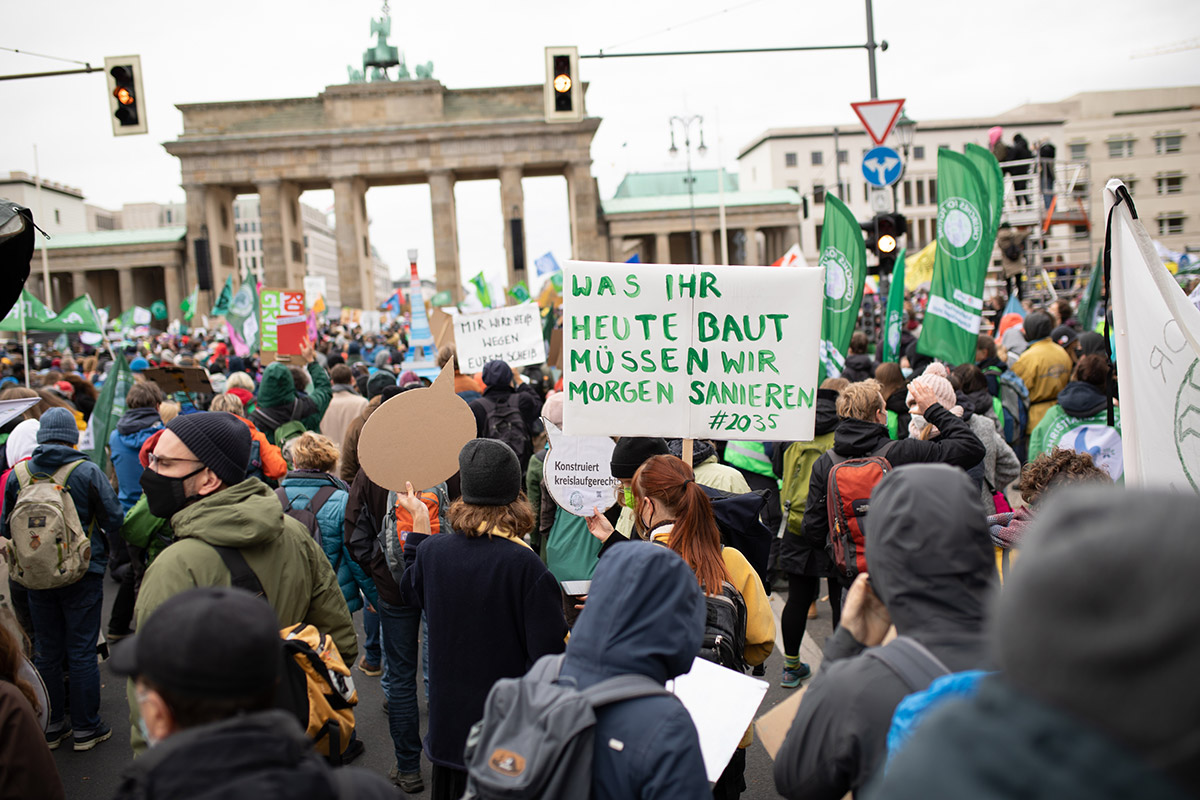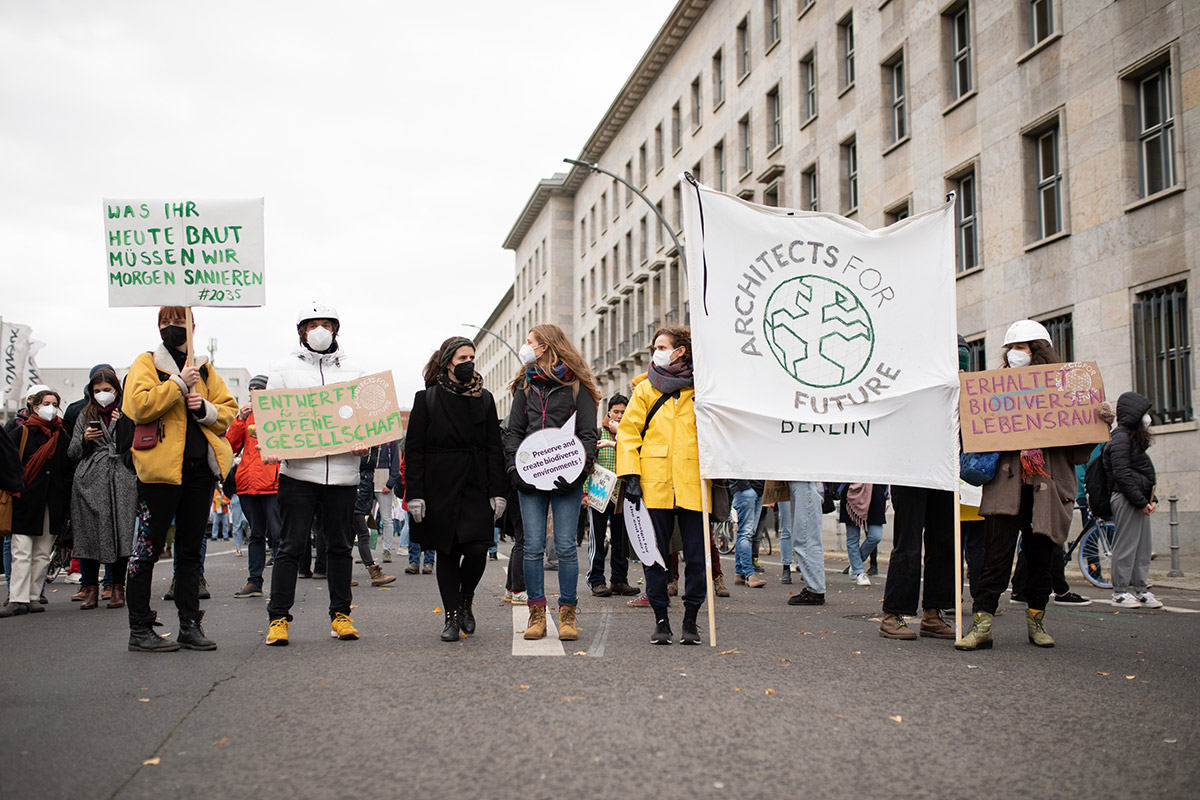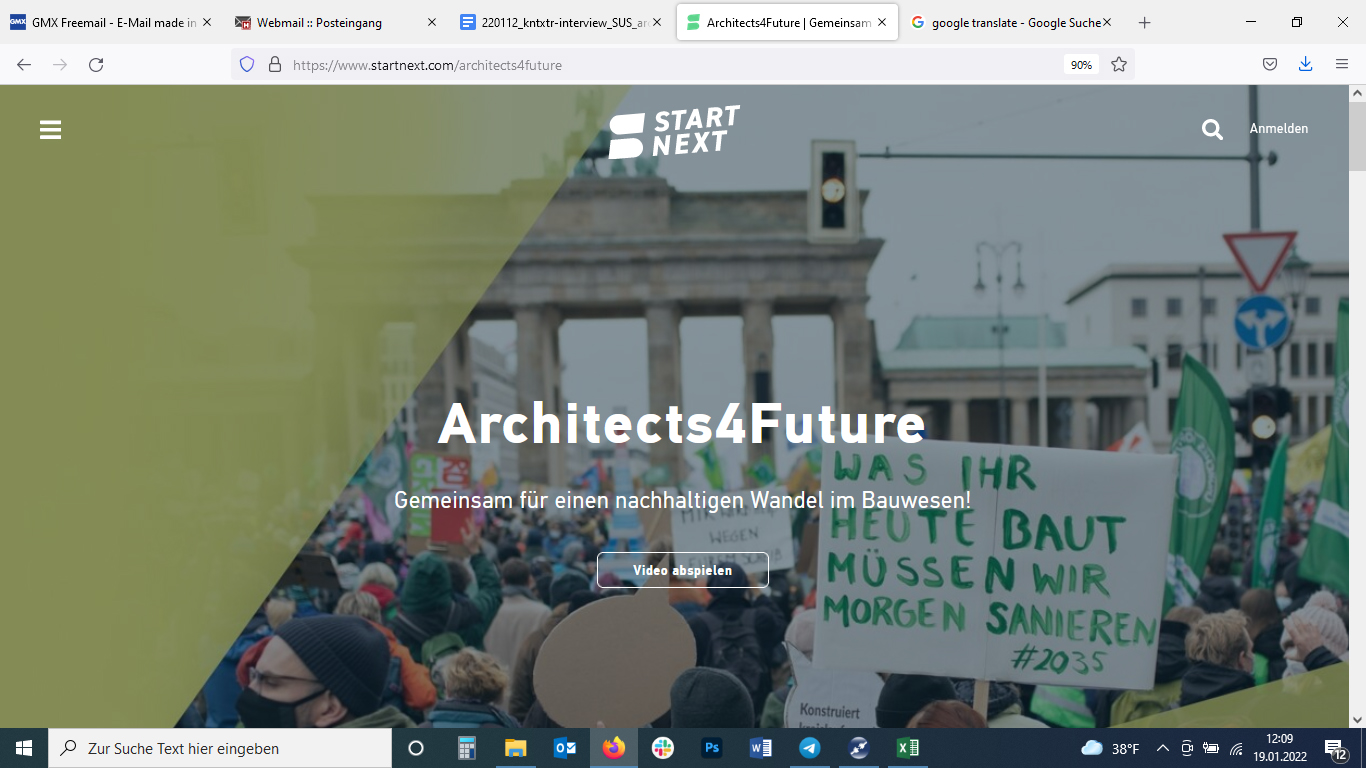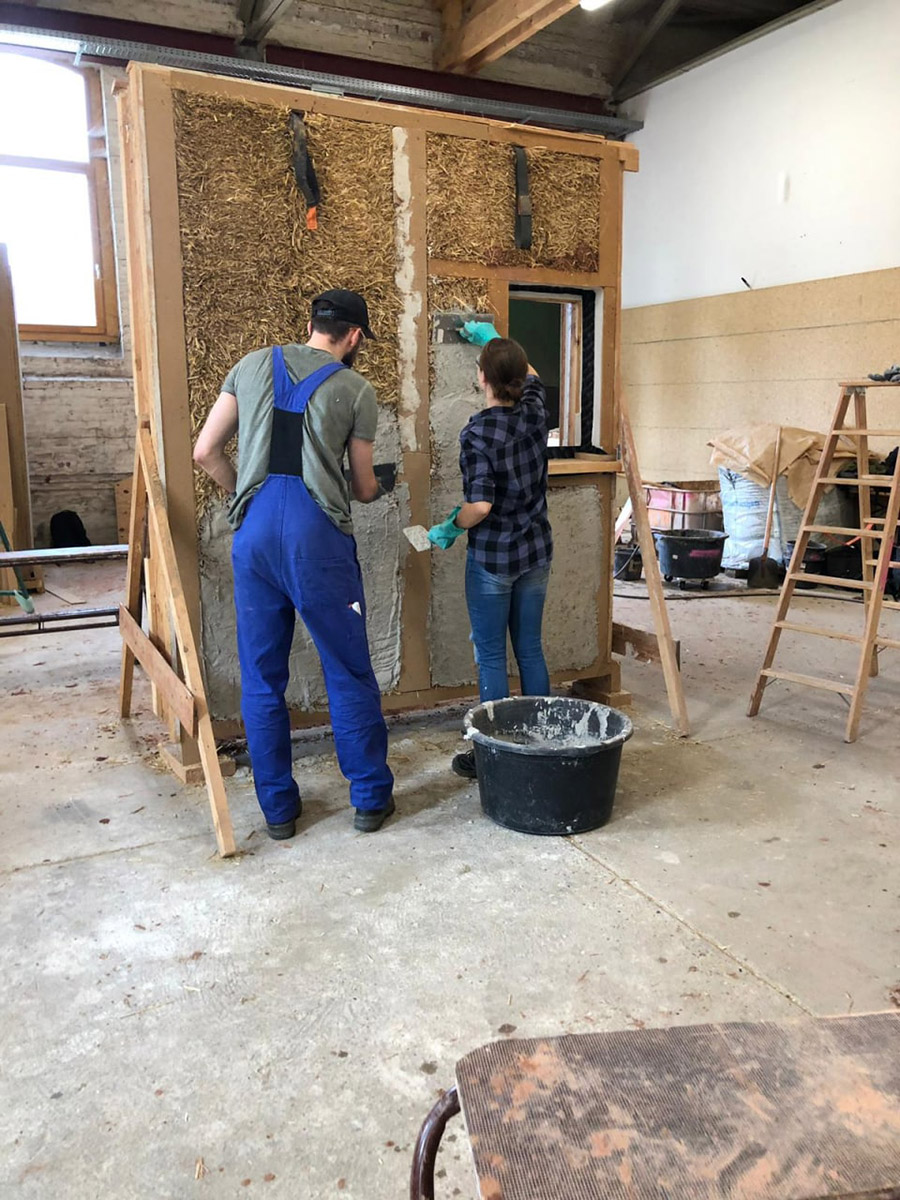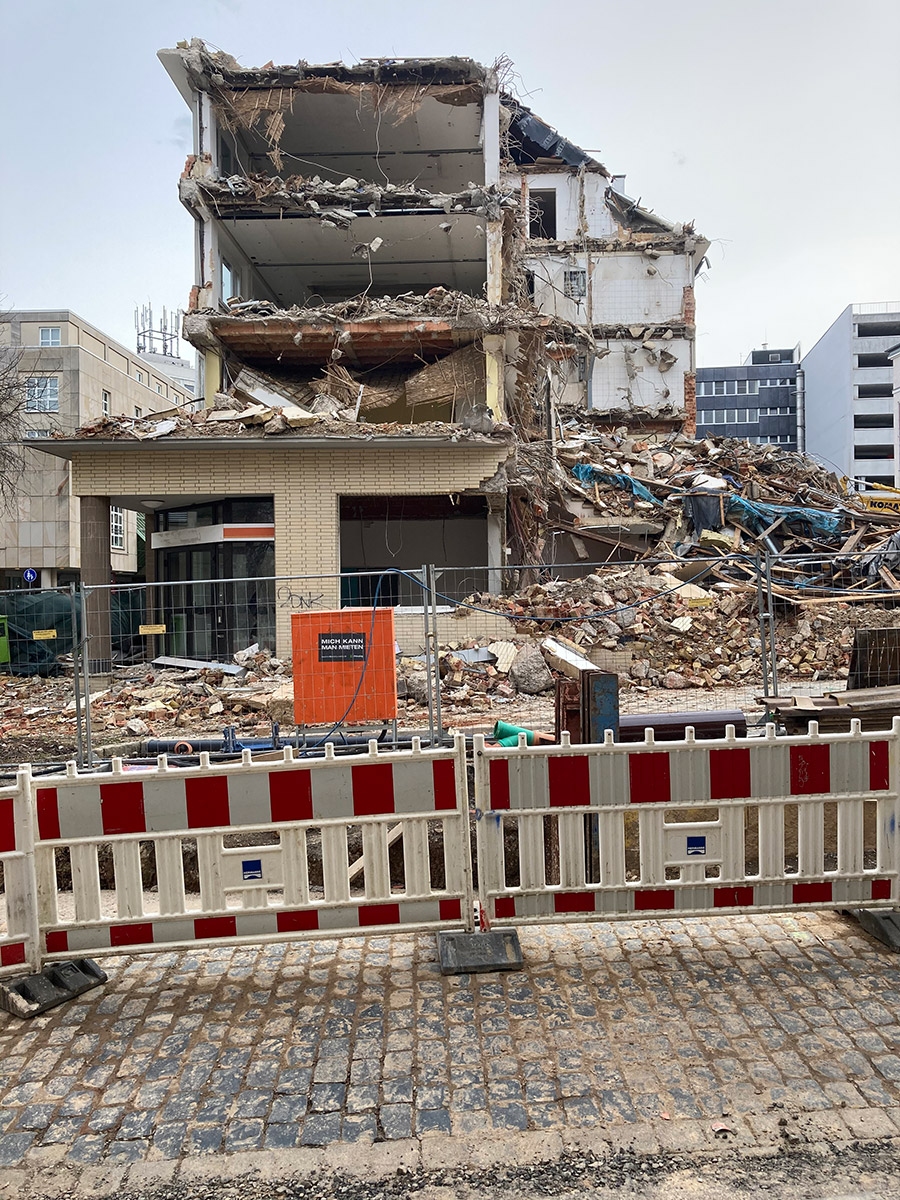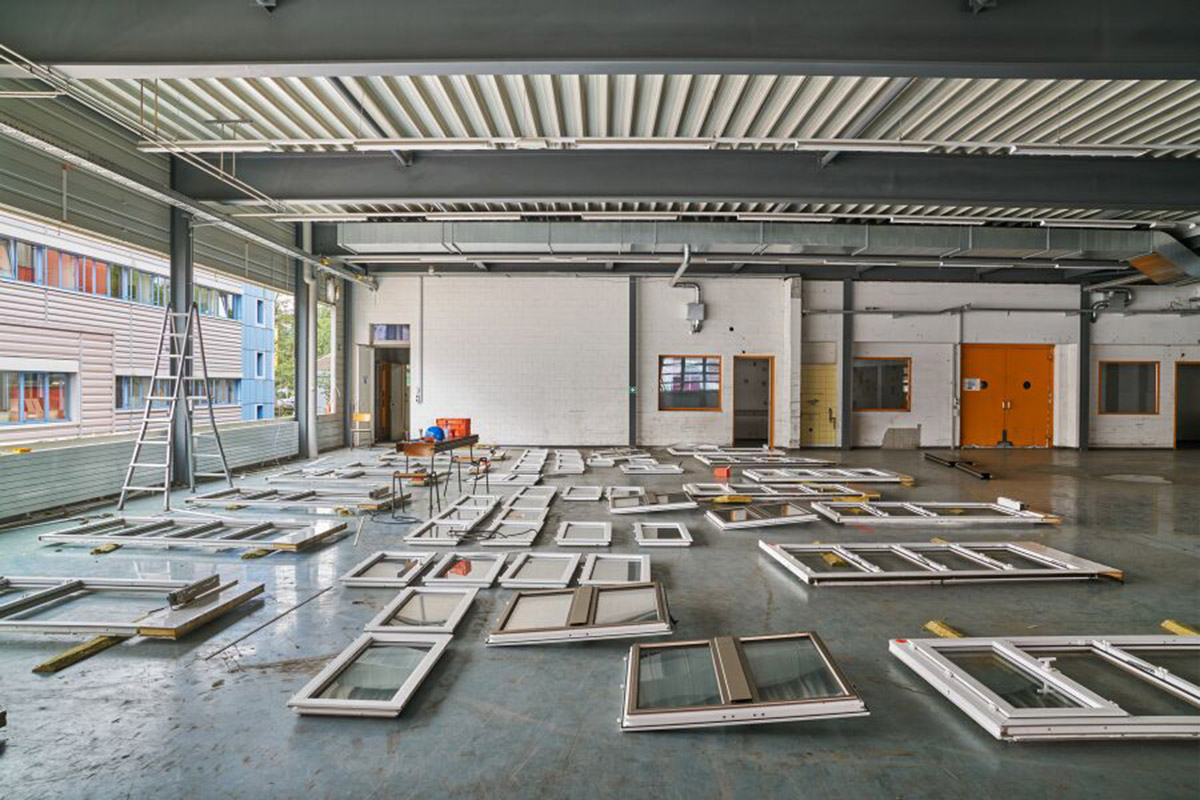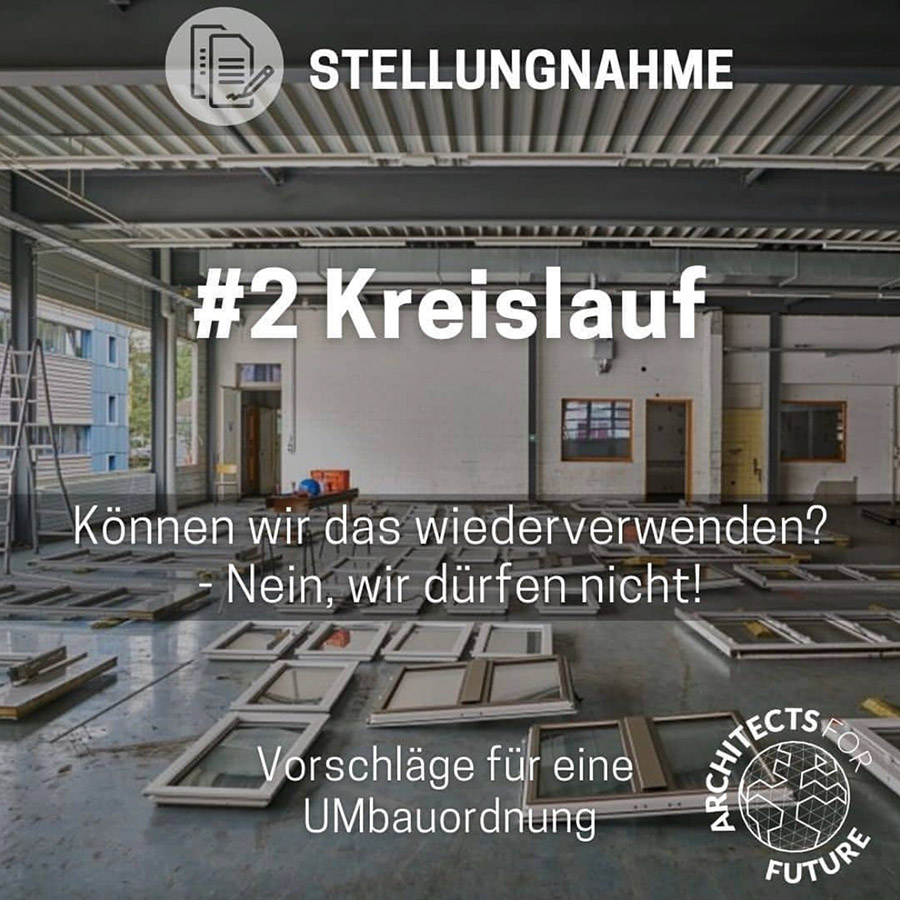22/014
Architects for Future
Movement
Germany/Austria/Switzerland
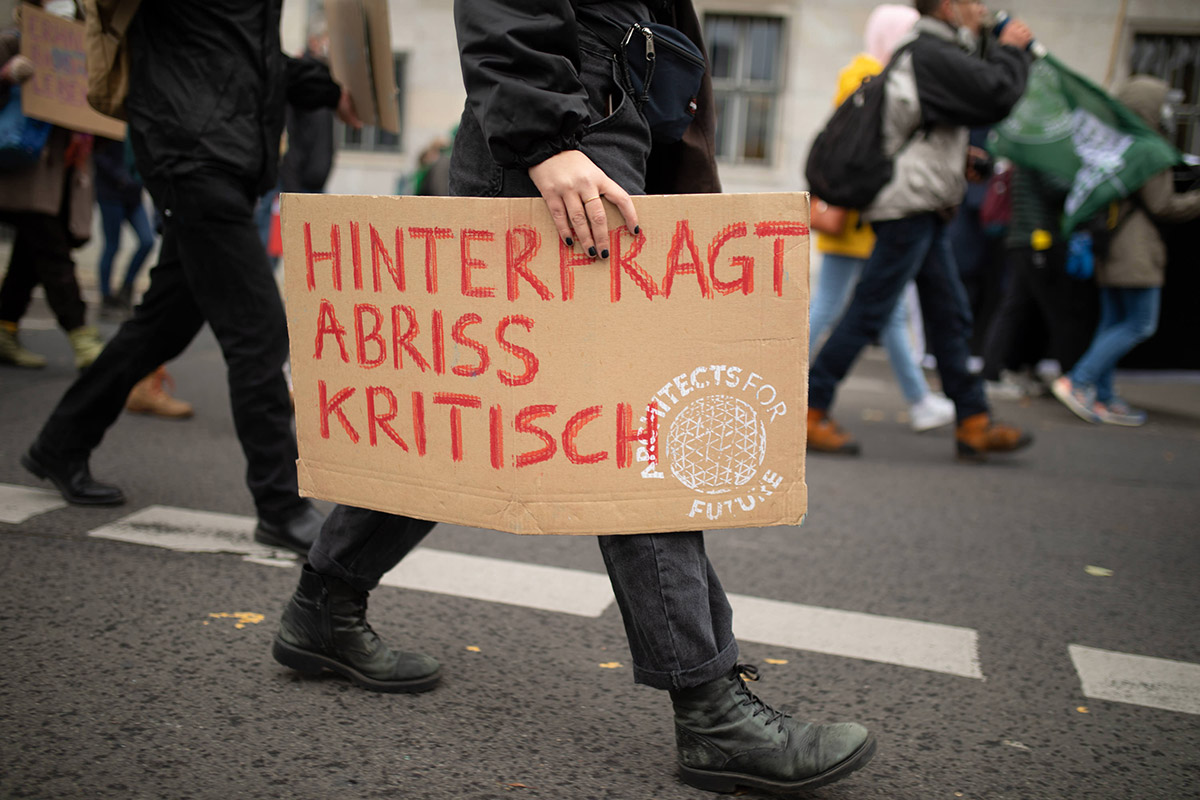
«We must network and collaborate in order to reach our common climate goals.»
«We must network and collaborate in order to reach our common climate goals.»
«We must network and collaborate in order to reach our common climate goals.»
«We must network and collaborate in order to reach our common climate goals.»
«We must network and collaborate in order to reach our common climate goals.»
Please, introduce yourself and your project…
We are Architects for Future, in short A4F. As you can figure out by our name, we stand in solidarity with the Fridays for Future movement and are committed to meeting the goals of the Paris Climate Agreement, limiting global warming to a maximum of 1.5° Celsius. Did you know, that the construction and operation of buildings causes about 40 % of all carbonemissions worldwide?! Our common goal is the holistic sustainable transformation of the building sector. We act on national and international level, mainly in German speaking countries.
Come and join us at the Bauwende Festival 26 – 29 May 2022 in Berlin.
How did you find your way into the extended field of architecture you are working and navigating in now?
Our movement was founded in June 2019 by a few architecture graduates in Wuppertal. The founding members were frustrated with the unsustainable reality of building practice and had the urge to join forces for a professional movement in Germany, similar to Scientists for Future. A4F works on a voluntary base and consists of activists from different disciplines - mainly, but not only architecture. There is a non-profit organization (Architects for Future Deutschland e.V.), which was founded in 2020 in order to professionalize our actions. At the moment our movement consists of about 40 local groups in Germany, Austria and Switzerland with roughly 2.000 active A4F members.
What are your experiences founding your own movement?
In the beginning the biggest challenge was actually to gain respect and trust from the professional world. Architects (and representative chambers) were especially hesitant and it took both communicative efforts as well as the success of some A4F projects to gain their support.
Then the Covid pandemic hit us quite hard in the beginning of 2020, when we were suddenly not able to meet physically anymore. But we switched automatically to the digital world and used the moment of crisis to become more resilient for the future. After a while, online communication actually enhanced our (inter)national network and many new project groups were formed trans-regionally. Thus we founded our non-profit organization, just as we had planned beforehand, and were then able to realize our largest project in January 2021: the Bundestag petition “Bauwende JETZT!” Through our cross-media campaign (mainly via social media) about 60.000 supporters signed our petition! And the best moment was yet to come: the debate with the petition committee of the German Bundestag in March 2021 about our petition demands.
Since then we have received so many requests from other initiatives, organizations, networks, journalists etc. who are glad to have found professionals on the topic of sustainable building. We speak about economic and political issues in the building industry, which seems to be especially rare outside of our own professional bubble.
Our growth and success are simply unbelievable – yet sometimes hard to deal with. 2022 will be a year of transition for us. We have just recently raised enough money through a crowdfunding campaign to finance administrative and communicative job positions. With the money we will create the “Bauwende” office, which includes a general manager, a press and PR manager, a network coordinator and an employee for our knowledge database and other educational projects. After organizing all of that on a voluntary basis we can finally get back to working on our content regarding sustainable building solutions, material issues and so forth.
What was the most important topic you needed to agree on as a team to be able to create this project together?
Together – is just the right trigger: We are in this together, and we need the help of everybody we can get, despite their age or knowledge or social or professional background. That is a big experiment for all of us, the individual moves into the background, and the common good or public interest moves up front.
We work on projects democratically, with no or very low hierarchy. This cooperative way of working is not very common in our professions. It leads to long discussions on many topics and we have not yet agreed on all of them. However, we believe that this is a transition that is also needed in our professional world, as we can only successfully overcome the climate crisis together. We need to put all our individual knowledge and experience into one big common pot to make the turn in time.
How would you characterize the city you are currently based at as location for practicing architecture/realizing a building?
From the beginning on we decided to be organized decentralially, just like our federal political system in Germany. Our “mother” organization, the “Verein” and the working groups deal with the overall topics, our local groups get into municipal, regional and sometimes state-wide action. It started this way naturally because we all lived and worked in different places. It is a bonus for us now, that we dig deeper especially in political grounds, because building regulations are different depending on the (federal-)state or district and we can actually learn from failure or progress in different regions. Thus we need to be up-to-date everywhere, which is why internal communication and network between our different groups is so crucial.
We are spread across the whole country, mainly in large cities with universities and large architecture offices though. In order to be able to talk about the countryside we need to spread out further into small communities and rural areas. That is one of our goals for the near future.
What does your desk/working space look like at the moment?
Working Space - Crowdfunding Campaign
How do you define the following words and what do they mean to you?
Resilience: All solutions that we demand for sustainable planning and (non)construction need to be resilient to have a long-term effect. Additionally, they need to make our built environment climatically resilient and mitigate natural disasters such as heat waves or flooding, like the recent catastrophe in western parts of Germany.
Sustainability: Sustainability can only be understood holistically: ecologically, socially and economically. Currently mainly short-term economic interests lead decisions in our sector. This needs to change for a future-proof and a liveable built environment for our current society and generations to come.
Circularity: Resource depletion and waste play a big part in the environmental footprint of the construction / building sector. We need to reduce our consumption and (re)use what is already there: infrastructures, buildings, dismantled elements, waste materials.
CO2-Pricing: A topic strongly debated in our groups. The pricing might work under certain conditions to shift the market. However, it only represents one aspect of environmental sustainability. The measured price needs to be realistic, as mentioned in the Fridays for Future Study of the Wuppertal Institute, and it definitely needs a social compensation.
Cradle-to-Cradle: Same as circularity. Valuing resources and creating no waste. As Dirk Hebel, a professor of the KIT in Karlsruhe puts it: “Waste is a design-error.”
What is your favorite building material and why?
There are several claims, which are at the base of our movement. The first one is: Question demolition critically. The second one is: Choose healthy and climate-friendly materials. To put it into a more exaggerated wording: We have already built everything we need! If we have to build new, let’s do it in a circular way!
If we translate this into the choice of building materials: Foremost we need to recycle and reuse materials, if possible without downcycling them. If no materials from former buildings and building sites are available, naturaland regional materials are the best choice – constructed as building elements that can be dismantled and reconstructed, such as wood. On top of that we are very happy that “old-fashioned” materials such as clay and straw are being used and reinvented again, and that there are so many experiments in order to find new plant-based solutions with hemp, cattails, algae, fungus and more.
What are your thoughts on the dichotomy of Low-Tech / High-Tech in the sustainable discourse? (i.e. High-Tech solutions may be considered as a greenwashing strategy/following neo-liberal profit maximization strategies only vs. Low-Tech solutions that may be considered serving new tendencies of folksy, regressive architecture pleasing populist ideals).
In our mind-set there is no dichotomy, we need simple and sophisticated constructions and materials to make the “building turnaround”. Low or no-tech strategies are of course closer to our claims as they focus on the reduction of operational energy demand with passive means. We definitely need to be inspired by the roots of building with natural materials, artisanal and DIY-ways of constructing, and natural ways of ventilation and heating, that are also maintenance effective. We also need to think about the size and amount of space we need individually and commonly for living, studying, working, harvesting etc., so that we can develop new ways of living together in dense cities and in rural regions without sealing too much land.
At the same time digital, technological and scientific experiments and research enable high-tech materials and construction methods, solutions to reduce operational energy demand and can therefore make future transformations faster and more resilient; so we need the high-tech innovations as well.
What essential actions do we need to take as architects now regarding a more sustainable future for everyone? From your perspective: What are the (political, legislative) influencing factors that matter most?
First of all, we need to consider Germany as already built, while understanding and questioning the many reasons behind the need for new built space. Solutions for this are plenty and creative: From sufficient spatial planning with multifunctional and sharing concepts to the reuse of vacant or outdated buildings, rooftop extensions and the revitalization of towns with shrinking populations.
We need to change the mindset of planners, developers, clients and politicians alike. To make “Umbauen” (conversion, renovation or modification), and even better “Weiterbauen” (extending existing building) easier to accomplish and the first choice for every project, we need to transform the federal “Musterbauordnung” into an “Umbauordnung” and to unify all of our different “Landesbauordnungen”. Apart from the regulations that need to be adapted to future planning, funding possibilities and distribution criteria should be in favour of conversion and sustainable, circular materials instead of new building and disposable constructions.
What needs to change in the field of architecture according to you? How do you imagine the future?
Our utopia derives itself from a point that Luisa Neubauer made: It would be great if A4F become obsolete in 2050 because everybody plans and develops and builds according to our demands. A future where the impact of building on the environment and on our society is understood and valued. A future with a social and ecological built environment that makes the world worth living for future generations.
Imagine you have the power to change the world: If there were one thing you could change right here right now, what would it be?
Haha, Architects for Future, as a collective, take over all of the building ministries in Germany and the EU. ;)
If there were one skill you could recommend to a young architecture student to focus on in depth at architecture school: what would it be and why?
Open your eyes to the beauty and context of the built environment and learn to adapt and transform buildings and constructions rather than demolish and build new, because there are only limited resources. Plan and build for the people and the environment. Put them into focus.
Are there other platforms/projects/campaign that you perceived as role model/good example?
- Fridays for Future, Scientists for Future and the whole For Future Bündnis in Germany
- Globaler Klimastreik
- German Zero
- Countdown 2030, CH
- European Architects! Climate Action Network
We must network and collaborate in order to reach our common climate goals. There are several role models and close partners, see above, we all learn from each other … and there are many more!
Project 1
Bauwende Jetzt!
Our petition "Bauwende Jetzt!", reached the quorum with almost 60,000 signatures, so that in March 2021 we brought our topics to the German Bundestag and discussed them publicly with various politicians within the Petitions Committee.
The petition's demands:
- The market price of building materials must include all environmental costs. Environmentally harmful building materials are then more expensive, and ecologically sustainable construction materials are more affordable through cross-financing. Pricing must consider the entire envi- ronmental balance including the CO2 value, energy, and water consumptions - from raw mate- rial extraction, through production, transport, reuse, and disposal costs.
- Construction products must be dismantled and installed in a recyclable manner to be reus- able after deconstruction. Loss of quality and functionality (downcycling) is to be avoided, and demolition materials (urban mining) will be used. The economic and political conditions are to be created and specified in the relevant regulations.
- Resource expenditures and CO2 emissions of a building must be presented transparently over the entire life cycle, including building operation and, if necessary, previous demolition. Data such as grey energy (the total energetic expenditure for building construction), resource consumption, and recyclability are to be reflected in laws (including the Building Energy Act), in subsidies, credit lending, and all building certifications.
- Surface sealing is minimized and only approved if it is ecologically balanced on the building or in the immediate vicinity. Otherwise, it will lead to the destruction of animal and plant habitats, species extinction, and further overheating and flooding.
- The protection of existing buildings must be regulated by a law that only permits demolition if it is socially and climate-relevant. Renovations are eligible for funding over and above heritage protection. The quota of deep thermal renovations will be increased massively. At the same time, a draft building code for building retrofits will be introduced to facilitate the renovation of existing buildings, e.g. due to deviations from the building code for new buildings.
- Sustainable construction will be integrated into the curricula at universities and training schools as compulsorily subjects. Appropriate continuing education courses are compulsory for skilled workers with prior training.
- In the future, planning and construction must be designed as demonstrably needs-oriented, flexible, and convertible to prevent housing and infrastructure shortages, building vacancies, and real estate speculation to strengthen the social urban infrastructure for greater resilience.
Project 2
Umbauordnung
After observing and analyzing the results of our survey on the obstacles of working in the context of existing buildings and structures we presented them to the public. Afterwards we elaborated the proposed changes for a new “Umbauordnung” that we finalized in July 2021 with an open letter to the German building ministers. In February 2022 we were even invited to work alongside some representatives from the ministers. This shows that we not only demand for change but develop realistic solutions for the “Bauwende”.
Statement
Website:architects4future.de
Instagram: @architects4future
Twitter: @architects4f
Youtube: @architectsforfuture
Facebook: @Architects4F
Interview: kntxtr, ah + kb, 05/2022
